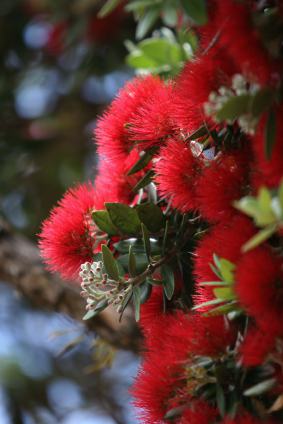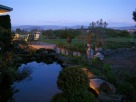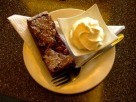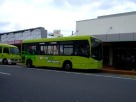- Home
- Rotorua History
Rotorua History
A Summary of Historical Events
Rotorua history - Gain an insight into events that have played a part in shaping this city and the people.
Spanning some 650yrs approximately, it seems as though we are relatively young here in New Zealand. Our history doesn't go back thousands of years, like Europe for example, but we sure have packed in our share of drama as you will see.
This Page Covers
Rotorua Beginnings in History
1350 - Hawaiki is the mythological homeland of Māori. From here, great fleets of migratory waka (canoes) set out travelling an old pathway. To navigate they used the stars, wave patterns and ocean currents. Destination? New Zealand. Also known as Aotearoa (Land Of The Long White Cloud).
One of the waka captained by Tama-te-kapua landed at Maketu in the Bay of Plenty. Here they settled in to enjoy the abundance of food.
It was also here that the people made a decision to be known as Te Arawa, naming themselves after their canoe Arawa.
Explorers, including a young man by the name of Ihenga, set out to see what else was in the area.
Ihenga eventually came across Rotorua and named it Te Rotorua-nui-a-Kahumatamomoe, ("The Second Large Lake of Kahumatamomoe"). Kahumatamomoe was a chieftain at Maketu. What a mouthful huh?
Ihenga's descendants settled around the various lakes in the district over a period of time.
I go into more detail about the arrival of the Te Arawa people in the 'Māori History' section.
Rotorua History in the 1800s
1820s - By this time Europeans (pakeha) were already established in New Zealand, mainly due to whaling and sealing.
As Rotorua was inland the Te Arawa lived in relative seclusion and did not know about the Europeans yet.
Their first contact came about when a number of Te Arawa were taken prisoner by Hongi Hika, a famous chief from up North. He subsequently transported the prisoners to the Bay of Islands. Here they were aided by missionaries as prisoners were not treated very well.
The Te Arawa people saw that the missionaries had something to contribute and later invited them to visit Rotorua.
1831
- The offer was taken up by Rev. Thomas Chapman who visited initially
but he did not actually settle here until 1835. The Reverend established
a mission in Rotorua and spent his life living and working amongst Māori.
He was followed by a number of missionaries one of whom was the Rev. Seymour Spencer. Rev. Spencer also spent his life living and working amongst Māori but out at Lake Tarawera.
These two men opened up their households to visitors all and sundry when they began to come to Rotorua.
1839
- John Bidwell, an English Botanist was the area's first documented
tourist. As well as writing about the wonders of Rotorua he also upset a
few people in his short time here. He did this by climbing Mt
Tongaririo which was considered Tapu (sacred) by Māori.
All
the while the European were moving in tribal warfare amongst Māori
continued. Te Arawa had more than their fair share of battles with a lot
of deaths resulting.
1849 - From here on visitor
numbers to Rotorua began to grow. This was due to the word being out
about "The Thermal Wonderland". Another big drawcard was the Pink
(Otukaupuarangi) and White (Te Tarata) Terraces at Lake Rotomahana.
I love the way people wrote in those days. For example:
"At irregular intervals on the grades are pools; - pools! the word is profanation; they are alabaster basins filled with molten silver, blue as the vault of heaven, over whose gracefully-recurved lips pours down with a gentle murmur a never-ceasing flow derived from the boiling contents of the crater above."
—Lieut-Colonel St John describing the Pink & White Terraces
How is that for painting a picture?
There were only two ways to get into Rotorua at the time. Either tramping across the Mamaku plateau or by ship to Tauranga or Maketu then walking to Rotorua.
This was a long way, we're talking 61km from
Tauranga or 55km from Maketu on a track which took two days. TWO days.
Now it's down to about an hour.
1860s - A
bridle-track was finally built between Rotorua and Tauranga in the late
1860s allowing the increasing numbers of tourists to get to Rotorua in
one day.
1870 - The Duke of Edinburgh is Rotorua's
first Royal visitor. He presented a bust of Queen Victoria to the Te
Arawa people for their loyalty which still stands on the marae at
Ōhinemutu.
Around this time Ōhinemutu became the place to stay prior to visiting the Pink and White Terraces. The hospitality of the local tribe Te Arawa was shown to all visitors regardless of where they came from.
This hospitality extended to locals and visitors alike bathing together in the thermal waters of Ruapeka Bay.
In the 1870s a number of hotels and such were built to accommodate the ever-increasing tourism trade.
At the same time a new type of traveller began to emerge. They were the ailing and infirm, suffering from such conditions as rheumatism and gout amongst other things. They arrived looking for relief and possibly a cure that came from bathing in the thermal waters.
1876 - A road between Rotorua And Te Wairoa opened in order to transport tourists wanting to visit the Terraces. Exorbitant prices were charged enabling local Wairoa Māori to earn about £4,000 each per year. That was a huge amount at the time.
Such was their wealth, they replaced the paua eyes of the carved figures on their buildings with gold or silver coins.
It
wasn't all good though. The easy money brought about a decline in their
way of life. Crops and fields were not looked after and disease and
alcohol abuse set in.
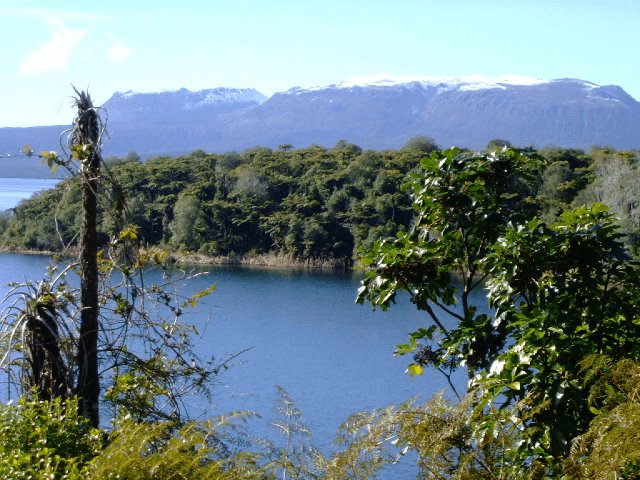 Lake Tarawera with Mt Tarawera in the background
Lake Tarawera with Mt Tarawera in the background1886 - Two boatloads of tourists were crossing Lake Tarawera to visit the Terraces when a large war canoe appeared. The twelve to thirteen warriors on board paddled silently in unison. The canoe got to about 800m away from the tourist boats and just... dissolved into mist. Very strange and quite eerie you would think.
The Māori on the tourist boat freaked out. They knew that the deaths of many of their people was forecast with that sighting of a phantom canoe.
This was later confirmed by an old Māori priest (Tohunga) by the name of Tuhoto. He said that it was an omen and that their area would be overwhelmed.
At the beginning of June there was a rise in the level of Lake Tarawera.
10th June - about midnight the earth began to shake followed by a heavy quake. At 2.10am Mt Tarawera erupted.
"Tarawera
Lake was a copper mirror, reflecting the mount from
base to summit in a
lurid glare. Dominating all hung the great
cloud-curtain, gloomy and
dark above, saffron and orange on its
under-surface. From the cloud
great balls of flaming rock dropped
from time to time, descending with a
splash into the waters of the
lake."
—William Bird viewing the eruption from the Waitoharuru cliffs
One hundred and twenty people, possibly more, died on this night. The entire surrounding area was decimated including the Terraces.
Although The Terraces had been destroyed it didn't stop the tourists from visiting Rotorua. In addition to the thermal activity at Rotorua itself they now came to see the results of the eruption as well.
Rotorua History in the 1900s
1902 - Rotorua gets it's first 'Balneologist'. A Balneologist
studies therapeutic bathing and medicinal springs. Dr Arthur Wohlmann
was hired by the government to help in their plans to expand tourism in
New Zealand. Dr Wohlmann orchestrated the plans for creating a spa
facility - The Bath House - that would attract wealthy northern
hemisphere visitors and settled on Rotorua for the site.
1908 - The Bath House in the Government Gardens opens.
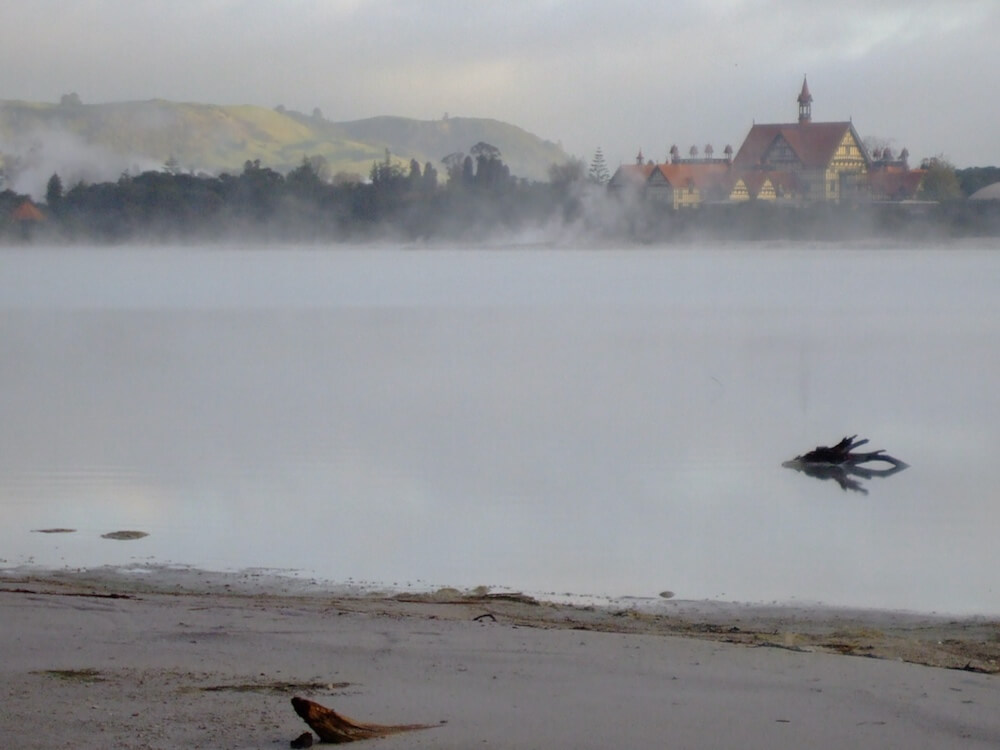 View from Sulphur Point Flats to the Bath House
View from Sulphur Point Flats to the Bath HouseIt was supposed to be the southern hemispheres answer to the grand spas of Europe and the like but was not to be. Between the difficulty of getting here at the time and the sulphur corroding all the metal piping, it soon became a nightmare to maintain. The Bath House finally closed it's doors in 1966.
The Bath House today houses the Rotorua Museum and it is the most photographed building in New Zealand.
1920s
- I love some of the interesting historical facts I found during my
research for this page. Take this one for example. Fenton St, originally
known as 'The Whaka Road' ran from the lake end of town straight to the
Waikite Geyser - now dormant - at Whakarewarewa.
When the Wairoa or Pohutu Geysers blew as they periodically did, a flag would go up at the Grand Hotel. The Whaka Road would then disappear under a cloud of dust because tourists would race along it in gigs to see the geysers 'playing'. That must have been a sight.
Another story that amuses me is about a Mr P.A (Arthur) Kusabs. He used to drive to Tauranga on a regular basis - picking up and dropping off passengers I can only presume.
Now this road had - and still has, although much improved - some steep winding parts to it. Not a good place for brakes to fail is it? His did.
Using some good old Kiwi ingenuity, he and his passengers chopped down a tree to tie to the back of the vehicle. For a brake! By the time they got to the bottom of the gorge all the gears had gone apart from reverse.
You
can imagine what happens to his neck after reversing the sixteen miles
(25km) into Rotorua can't you. He wasn't a good look for a number of
weeks that's for sure.
1933 - The Blue Baths, a
beautiful building built in the Spanish Mission style opened in the
Government Gardens. It consisted of two pools, one was deep with diving
boards and the other was shallower.
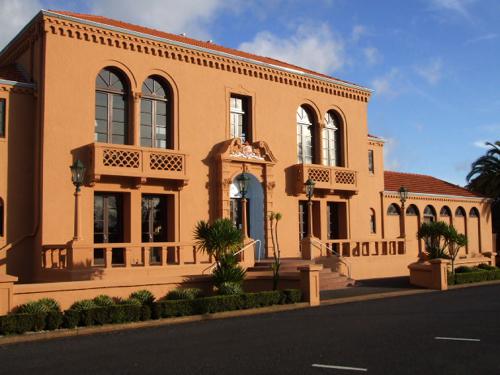 Rotorua Blue Baths - Historical Events Timeline
Rotorua Blue Baths - Historical Events TimelineThis building saw the first ever 'mixed' bathing in New Zealand, in fact, I think I was told that it was the first in the world. Hard to believe now isn't it.
I used to swim in these pools myself as a youngster and will never forget running and jumping out into the middle of the pool in the deep end. Well, I couldn't get back to the side could I. I didn't know how to swim at the time. Luckily some kind person hauled me up and took me to my mum at the side.
Rotorua History in the 2000s
2001 - There begins a resurgence in the popularity of spa facilities with Rotorua proclaiming 'health and wellbeing'. This is now big business in the city with the 'Polynesian Spa' being amongst the world's Top Ten Spa's - as awarded by Conde Nast, a worldwide magazine publishing company.
The Polynesian Spa was once the
Government owned Ward Baths that opened in 1931 and closed in 1972. It
was then leased by a family who began to develop the site beginning with
thirteen pools.
Treaty Settlements
New Zealand must be one of the few countries in the world where a treaty
with the indigenous people is honoured although in saying that, it's still a work in
progress.
2004 - Te Arawa received monetary compensation and title to 13 local lake beds.
2008 - 19 areas of Crown-owned land was returned to the affiliated Te Arawa iwi (tribe) and hapū (section of tribe)
I will continue to add further information to the Historical Events Timeline about Rotorua NZ as more comes to hand.
Sources
The Romantic Past of Rotorua - Don Stafford
Rotorua 1880-1980 - Don Stafford & others
100 Years of Rotorua - published by Braynart Group
Rotorua Museum
Paul Tapsell, 'Te Arawa', Te Ara - the Encyclopedia of New Zealand,
http://www.TeAra.govt.nz/en/te-arawa/print (accessed 17 October 2020)
